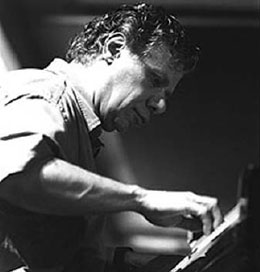Large doses of Haydn seems to have lifted my meager spirits yesterday. I also had my weekly chat with my boss which always lifts my spirits as well.
Also listened to cuts from a vinyl Blue Note compilation of Chick Corea I recently purchased for 3 dollars.

I used to admire this man’s playing quite a bit but found his move from the piano to the synth and other electronic sounds not terribly interesting. I like the way his musical mind works and especially enjoyed the cuts: Ballad I and Toy room (recorded in 1970 with Dave Holland on Bass), and The Law of Falling and Catching Up (recorded in 1968 with Miroslav Vitous on Bass). He is on piano on these. I’m actually listening to them right now. I don’t understand how this music is all that significantly different from much of the 20th century classical tradition except maybe it’s improvisatory where classical is so locked into the confines of a performance tradition that requires exact reproduction of at least notes and rhythms if not interp.
I was thinking this yesterday as I went from listening to Andrew Russo’s wonderful recording of John Adams’ “Phyrgian Gates” to playing through it myself.


“Phrygian Gates” when performed the way Russo does sounds wonderfully random and improvised in a rhythmic inspired way. Unfortunately everything in this piece is planned by the composer and executed faithfully by the performer. (That’s Russo on the right above. He reminds me a bit of Captain Hammer from Dr. Horrible, heh). It is a ton of work to do it well. I managed to pull together six or so pages (it runs to 60 pages) at the performance tempo with reasonably good interp yesterday just for the helluva it.
I remember hearing my first live performance of minimalism. It was an organist in a nearby city performing his own work. It sounded improvised. I asked to see the score but he demured contributing to my suspicion that he just sat up there and doodled around on his own themes. Considering this particular musician I still suspect this. But considering the nature of the style, I also think that he may have notated the piece carefully like Adams. (This composer was extremely protective of his scores in general so this adds to the plausibility that he may have been playing from a score.)
It is a ton of work for a random improvised effect. And ironic for me because I do so much improvising. But I find it is good discipline and rewarding to work out the notes to compositions by living composers. I once heard Adams describe this piece as a “virtuoso” piano piece. It doesn’t strike me that way save in endurance. I sometimes can’t tell what these academics actually have in mind when they open their mouths and talk about music. But I’m pretty sure that’s just my own eccentric take. Anyway, it’s the only point of view I have, heh.


I listened to Aldo Ciccolini’s Piano Music of Erik Satie, Vol I on vinyl as well. I find saturating my day with music helps me be a tad less insane. That’s Ciccolini on the right above. I have been playing and studying Satie quite a bit. It is fascinating to me that he employees the language of the 20th century (quartal harmony and planing) in 1887. This contributes to the validity of his observation:
:Debussy’s aesthetic is symbolist in some of his works and impressionist in most. Please forgive me— for am I not a little bit responsible? That’s what people say. Here is the explanation. When I first met him …. he was full of Mussorgsky, and very conscientiously was seeking a path which he had difficulty in finding. In that respect I was much better off than he was, for my progress was not slowed down by any Prizes, whether from Rome or any other town since I don’t carry that sort of thing on me or on my back, because I’m a type rather like Adam (the “Paradise” Adam) who never won a prize—a lazy type, no doubt. At that time I was writing music for Le Fils des Etoiles on a text by Joseph Peladan, and I explained to Debussy the necessity for a Frenchman to free himself from the Wagnerian adventure which in no way corresponded to our national aspirations. And I told him that I was not anti-Wagner in any way but that we ought to have our own music— if possible without choucroute (sauerkraut). Why shouldn’t we make use of the methods employed by Claude Monet, Cezanne, Toulouse-Lautrec, etc ….? Nothing simpler. Aren’t they just expressions? That would have been the origin of a new start which would have led to results which would be almost bound to be successful —and profitable too …. Who could have provided him with’ examples? Show him new discoveries? Point out to him the ground to be explored? Give him the benefit of one’s experience? Who? I don’t wish to answer, for I am no longer interested.’
I found this on this web site. It cites Ornella Volta’s 1989 book: “Satie as Seen Throughy His Letters” as the source. Wow. I think I want to own that book. So many books, so little time.